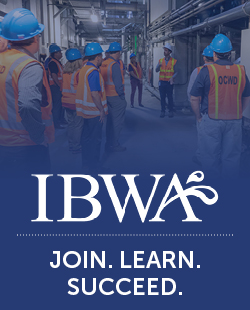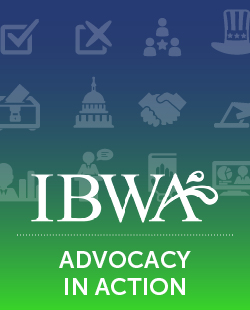NRDC’s Bottled Water Report: Pure Fact or Pure Fiction? by Arthur von Wiesenberger — April 12, 1999
NRDC’s Bottled Water Report: Pure Fact or Pure Fiction? by Arthur von Wiesenberger — April 12, 1999
The consumers of bottled water in the US are very different from other countries. They are divided into different categories. The older consumer is generally an unwilling consumer, forced to drink bottled water because they don’t trust municipal water. They believe that safe tap water is a God given right which in the past few decades has been taken away from them. This is the consumer base which will most likely embrace NRDC’s report. The boomer generation drinks bottled water and embraces it as they helped to drive the product into a mainstream beverage product. Generation X and younger have grown up in a bottled water society which though evolving, is not as sophisticated as others such as in Europe. But these consumers trust the safety and purity of bottled water and this trust is why the category is so popular. When it comes to bottled water most US consumers drink it for what is not in it (chlorine, sodium, calories, etc.) not for what is in it. This is completely opposite from the European perspective of tap water and bottled water. Europeans have never trusted tap water for drinking. They drink bottled water for the combination of minerals in the water and the unique physiological actions of those minerals.
The NRDC report’s goals are clearly stated in their executive summary recommendations, “The long-term solution to our water woes is to fix our tap water so it is safe for everyone, and tastes and smells good”. This will never happen. The astronomical costs, the deteriorating infrastructure of the municipal systems and the reality that municipalities using antiquated technologies makes it a pipe dream of the authors. Even if it were possible, does it make sense to attempt to raise tap water quality to that of bottled water when we use less than ½ of one percent of tap water for drinking while the rest is flushed down toilets, used for washing and irrigation?
Why would this study be produced in the first place? There has not been any illnesses attributed to the consumption of bottled water in the US for over 37 years. Bottled water has a recall program in place, as required by the FDA, and the industry leaders have demonstrated an effective self-regulating position with both State and Federal agencies. The voluntary Perrier recall in 1991 is an example where a leader instigated a recall of all their product worldwide even though there was no health threat in the product water.
Within the beverage industry there are many other products where water is a key ingredient, such as in cola or beer. Consumers know little of those product’s source water or the quality of that water yet the NRDC doesn’t touch on those products. Therefore one can only conclude that the report is a direct attack on the bottled water industry and uncovering the funding of the report may well reveal where the report’s political agenda resides.
The misleading findings in the report rely on a reader’s acceptance of certain buzz words as bad such as HPC bacteria. It sounds bad until one looks below the surface and realizes that HPC bacteria is in everything, from milk to cheese, to yogurt and vegetables. In Europe this “live” aspect to water is considered beneficial for humans and according to French physicians, helps the internal flora of the stomach. HPC in bottled water is not regulated because it is safe, natural and of no health concern.
The report also gives half truths. Tap water may be monitored more often than bottled water but for very different reasons. Tap water contains chlorine which can be toxic and requires constant monitoring. Parasites such as cryptosporidium has caused thousands of illness in tap water and regular surveillance is required in order to avoid disasters such as Milwaukee’s tap water illnesses and deaths in 1993. But bottled water producers use absolute one micron filtration which stops cryptosporidium. Unlike bottled water, municipalities have no recall plan if tap water, such as the Milwaukee crisis, poses a health threat. The FDA effectively regulates many different foods and beverages. The EPA does not. To recommend, as the NRDC does, that the EPA be given the authority to oversee bottled water is reinventing the wheel, and in our opinion a far less appropriate one. In fact the EPA regulations for tap water are not as stringent as the FDA’s regulations for bottled water.
Some brands were singled out by the report but the standards used in the report were misapplied. Arsenic, for example, occurs naturally in many rock and soil formations. As arsenic is found in many plants, animals, humans and groundwater, it is no surprise that low levels occur in Vittel, and Calistoga, which are both mineral waters. It was also found that Crystal Geyser Alpine Spring Water had traces of arsenic below 10 parts per billion. Health authorities agree the levels reported are of no health risk significance and are well within all existing state and federal health standards which is 50 parts per billion. To put arsenic in perspective, a 1993 study by Dabeka et al, found the mean arsenic concentration in meat and poultry is 24.3 parts per billion arsenic; in fish the mean concentration is 1,662 parts per billion; in bakery goods and cereals, the mean concentration is 24.5 parts per billion.
According to NSF International, an independent not-for-profit organization that inspects more than 500 bottling plants worldwide, “the report makes no attempt to put into perspective the trace level at which the few contaminants that were detected were found. None of these contaminants exceeded the health limits set by the FDA and EPA, and were found at part-per-billion levels. A part per billion is equivalent to one drop of vodka in a 50 meter Olympic swimming pool.”
Most of the bottled water sold in the United States are members of the International Bottled Water Association (IBWA). The association of bottlers follows the IBWA Model Code which includes specific programs to insure consumer safety and high bottled water quality. According to Bob Hidell, of Hidell-Eister, a technical water consulting firm “Any member of IBWA that complies with IBWA standards, puts out a safe, clean, healthy product.”
In a positive approach to the study Kim Jeffery, President and CEO of The Perrier Group of America said, “Bottled water is strictly regulated and very safe – and this study confirms that. The NRDC study tested more than 40,000 samples and found just two instances where federal standards were exceeded — and those were for fluoride.”
Subsequent testing on the brand that contained higher levels of fluoride (Black Mountain at 0.8 PPM – the Federal standard is 1.0) showed that the water was within the Federal guidelines.
Several points from the report which, in our view held merit, were NRDC’s request to expand the source identification to all states that bottle water. We believe that the consumer is interested in knowing exactly what they are purchasing when selecting bottled water. We think a better approach to providing mineral content to the consumer would be to remove the Nutrition Facts label which bottlers are required by FDA to include in the event that a sodium claim is made (i.e. low sodium or sodium-free). The values provided on the label for calories, total fat, total carb and protein are not relevant to bottled water. Consumers may find much more value in comparing mineral composition such as calcium, magnesium, potassium and other components that are naturally found in water.


